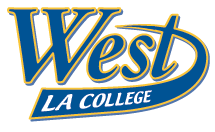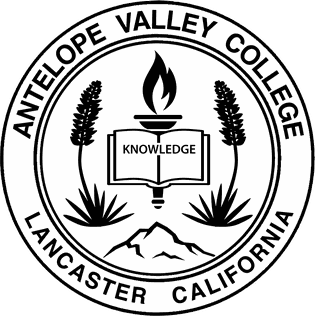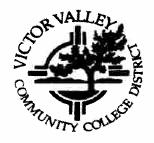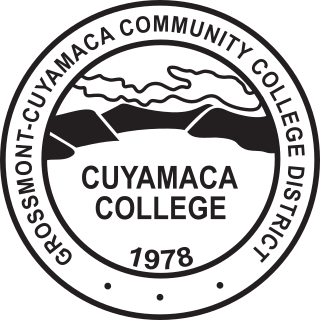
Cosumnes River College is a public community college in Sacramento, California. It opened in 1970, taking its name from the Cosumnes River which flows just a few miles to the south. As of Spring 2017, enrollment was at 13,091 students at its main and satellite campus in Elk Grove, California. Folsom Lake College, a former satellite campus, attained independence in 2004.

Sylmar is a suburban neighborhood in the San Fernando Valley and is the northernmost neighborhood within the City of Los Angeles. Historically known for its profusion of sylvan olive orchards, Sylmar can trace its past to the 18th century and the founding of the San Fernando Mission. In 1890, olive production was begun systematically. The Sylmar climate was also considered healthy, and so a sanitarium was established, the first in a series of hospitals in the neighborhood. There are fourteen public and eight private schools within Sylmar.
East Los Angeles College (ELAC) is a public community college in Monterey Park, California, a suburb of Los Angeles. It is part of the California Community Colleges System and the Los Angeles Community College District. With fourteen communities comprising its primary service area and an enrollment of 35,403 students, ELAC had the largest student body campus by enrollment in the state of California as of 2018. It was located in northeastern East Los Angeles before that part of unincorporated East Los Angeles was annexed by Monterey Park in the early 1970s. ELAC offers associate degrees and certificates.

West Los Angeles College is a public community college in Ladera Heights, Los Angeles County, California. It is part of the California Community Colleges System and the Los Angeles Community College District. It is accredited by the Accrediting Commission for Community and Junior Colleges. The school offers associate degrees including 18 vocational-oriented programs in addition to 25 transfer programs. The college awards more than 600 degrees and certificates annually in 39 fields.

Santa Monica College (SMC) is a public community college in Santa Monica, California. Founded as a junior college in 1929, SMC enrolls over 30,000 students in more than 90 fields of study. Although initially serving primarily pre-college high school students, the college quickly expanded its enrollment to educate college-age students and non-traditional students with the primary intention to transfer to a four-year university The college has high transfer rates to four-year universities such as the Universities of California or California State Universities.

Los Angeles Trade–Technical College is a public community college in Los Angeles, California. It is part of the Los Angeles Community College District and is accredited by the Accrediting Commission for Community and Junior Colleges (ACCJC), American Culinary Federation, and League of Nursing, among others.

Laney College is a public community college in Oakland, California. Laney is the largest of the four colleges of the Peralta Community College District which serves northern Alameda County. Laney College is named after Joseph Clarence Laney. The college offers both certificates and credits for Associate of Arts degree, as well as prerequisites to transfer to four year universities. It is accredited by the Accrediting Commission for Community and Junior Colleges.

College of the Canyons (COC) is a public community college in Santa Clarita, California. It comprises the Santa Clarita Community College District. The college is accredited by the Western Association of Schools and Colleges and has campus locations in Valencia and Canyon Country.

Antelope Valley College (AVC) is a public community college in Lancaster, California. It is part of the California Community College system. It is operated by the Antelope Valley Community College District, with a primary service area of 1,945 square miles (5,040 km2) covering portions of Los Angeles and Kern counties. Instruction is offered at several sites, including Palmdale and Lancaster, and through online and instructional television courses.

Missouri Southern State University is a public university in Joplin, Missouri. It was established in 1937 as Joplin Junior College. The university enrolled 4,346 students in Fall 2021.

Los Angeles City College (LACC) is a public community college in East Hollywood, California. A part of the Los Angeles Community College District, it is located on Vermont Avenue south of Santa Monica Boulevard on the former campus of the University of California, Los Angeles (UCLA). From 1947 to 1955, the college shared its campus with California State University, Los Angeles, then known as Los Angeles State College of Applied Arts and Sciences (LASCAAS), before the university moved to its present campus of 175 acres (71 ha) in the northeastern section of the City of Los Angeles, 5 miles (8 km) east of the Civic Center.
Allan Hancock College is a public community college in Santa Maria, California.
Folsom Lake College (FLC) is a Public community college in Folsom, California. It is part of California Community Colleges system and the Los Rios Community College District. Folsom Lake College serves the community with classes offered at its main Folsom campus at 10 College Parkway, two outreach centers, and various off-site locations nearby. As of Fall 2005, Folsom Lake College enrolled approximately 6,600 students choosing among approximately 1,000 different course offerings. Those students were served by 74 full-time faculty, including 9 counselors, 180 part-time faculty, 69 classified staff, and eight administrators. The college offers students over 30 different Associate of Arts or Science degree options, as well as over 30 certificate alternatives. The college's mascot is the Falcons and its colors are teal and black. The current president is Whitney Yamamura who began in 2017.

Victor Valley College is a public community college in Victorville, California. It is part of the California Community College System. The Victor Valley Community College district includes Victorville, Hesperia, Apple Valley, Phelan and Adelanto.

Mission College is a public community college in Santa Clara, California. It is part of the West Valley–Mission Community College District. The land the college is on was bought between 1966 and 1967. Mission College opened for its first year in 1975. In 1979 it had grown to "3,500 students, 8 administrators, and 73 instructors".

Ventura College is a public community college in Ventura, California. Established in 1925, the college has a 112-acre (45 ha) campus with an enrollment of 13,763 students. It is part of the Ventura County Community College District.

Cuyamaca College is a public community college in Rancho San Diego, California. It is part of the Grossmont-Cuyamaca Community College District and the California Community Colleges System. Along with Grossmont College, it serves the eastern suburbs in the San Diego area. Cuyamaca College opened in 1978 and now offers 81 associate's degree programs and 66 training certification programs to approximately 8,500 students. Many of the college's students transfer to the University of California, San Diego or San Diego State University to complete their bachelor's degrees. Cuyamaca's mascot is the coyote.

Los Angeles Valley College (LAVC) is a public community college in Los Angeles, California. It is part of the Los Angeles Community College District.

Oxnard College is a public community college in Oxnard, California. It was established in 1975 by the Ventura County Community College District. It serves the Oxnard Plain cities of Oxnard, Camarillo, and Port Hueneme. Oxnard College offers both degrees and certificates in 26 different fields. The college offers associate degrees, including the California transfer curriculum, as well as career and technical education programs to the local community.

Barstow Community College is a public community college in Barstow, California. It is an open-admission college serving more than 3,700 students in degree and certificate programs with approximately 120 faculty. It provides the first two years of college or university study as part of the California Community Colleges. The college's educational program includes lower-division course work, general education offerings, and vocational courses for transfer to baccalaureate degree institutions. The college offers occupational programs designed to prepare students for entry into the workforce. Service learning and self-enrichment classes are also offered to the community.
















